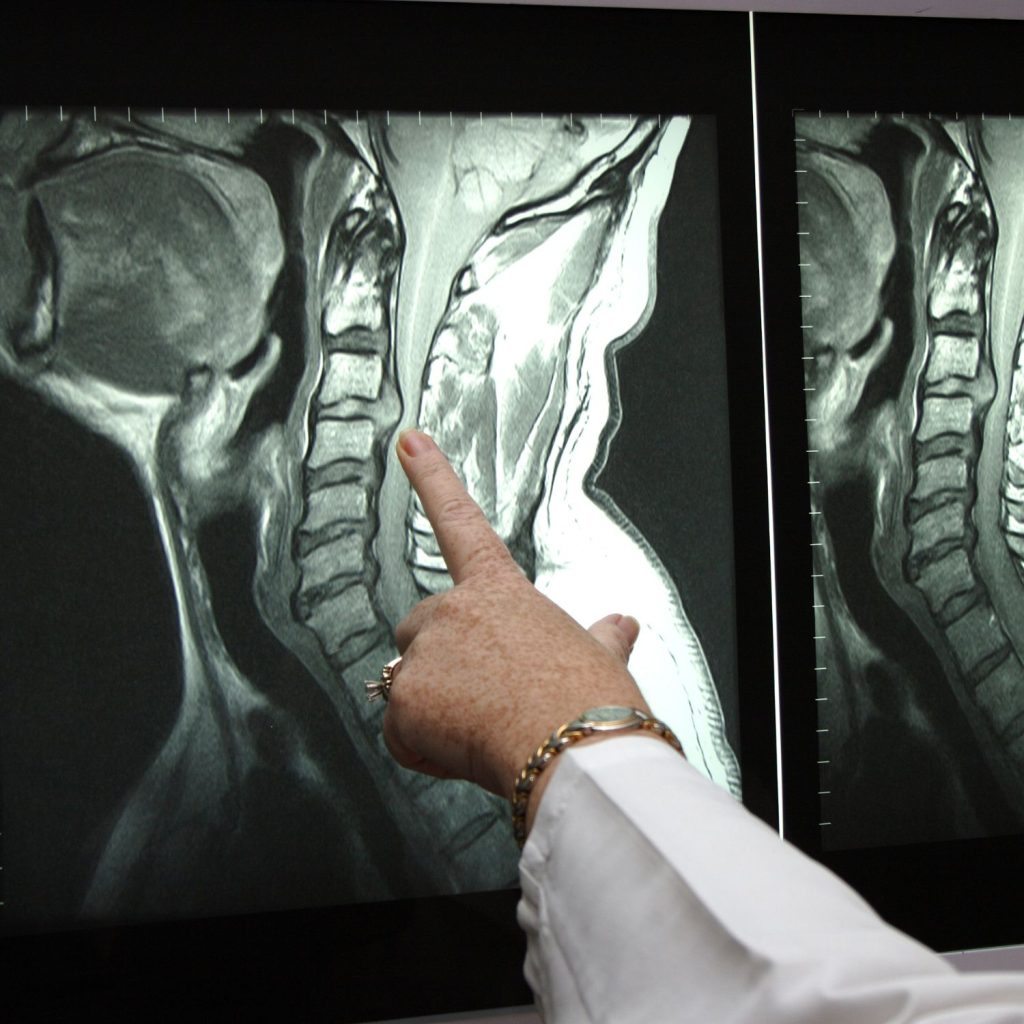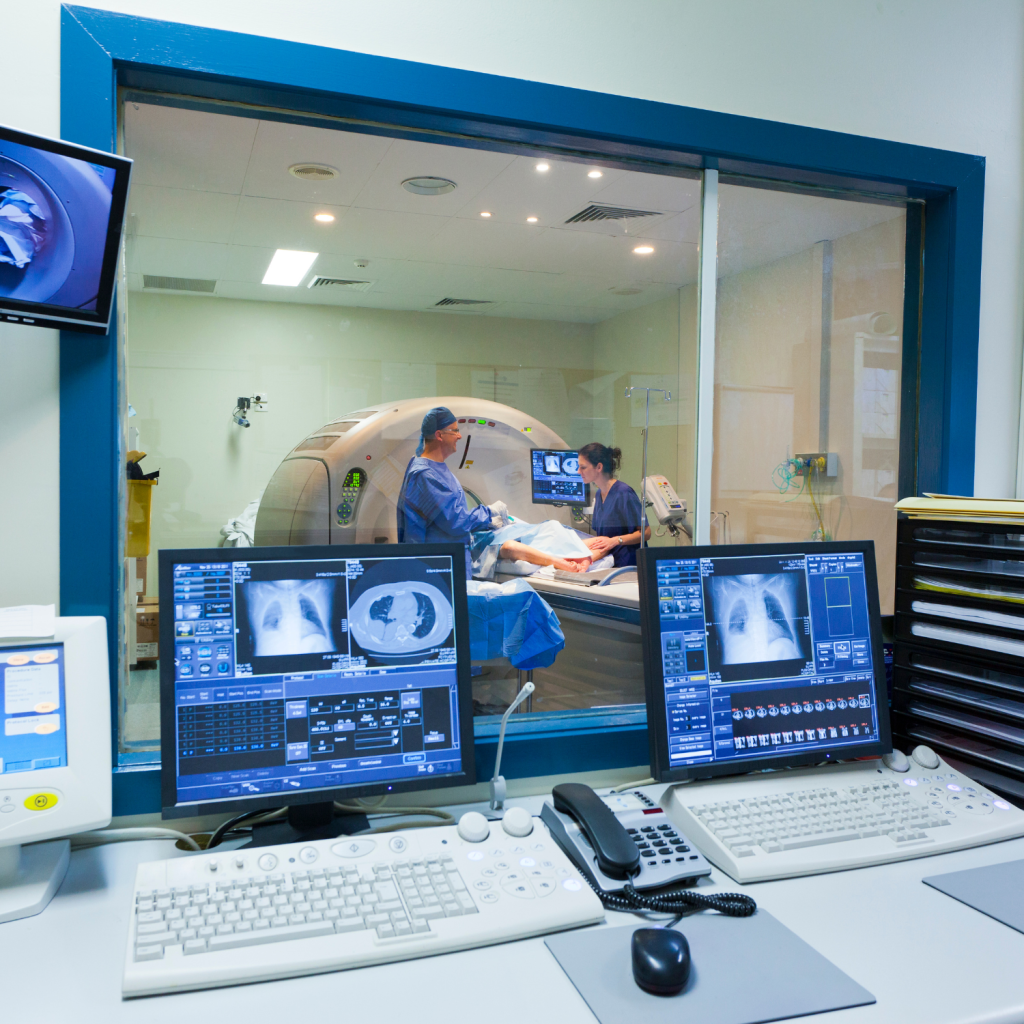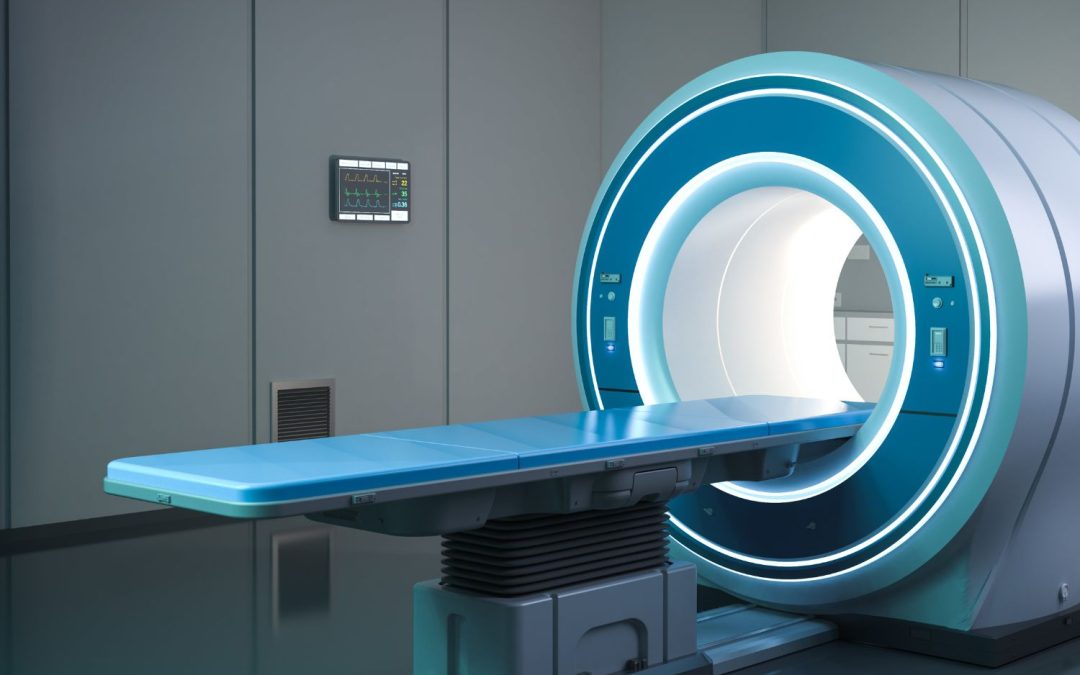Author: Dr. Claudia Martínez Higueros
Radiology has evolved remarkably since its origins in the late 19th century. Today, it is no longer a single discipline but rather a comprehensive field encompassing multiple clinical subspecialties and imaging techniques, allowing for non-invasive evaluation of virtually every organ and system in the human body.
In this article, we explore the main types of radiology used in medical practice, highlighting their technical differences and most relevant clinical applications.
1. Conventional Radiology (X-rays)

This is the oldest and still one of the most widely used imaging techniques. It uses ionizing radiation to produce two-dimensional images. Denser structures (like bone) absorb more radiation and appear whiter on the image.
Common applications:
- Chest studies (e.g., pneumonia, pleural effusion, rib fractures).
- Musculoskeletal system evaluation (fractures, dislocations, osteoarthritis).
- Basic abdominal screening.
2. Computed Tomography (CT)
CT scanning combines multiple X-ray images with digital processing to generate cross-sectional views of the body. It is fast, accurate, and invaluable in emergency settings and for critically ill patients.
Typical clinical indications:
- Stroke and intracranial hemorrhages.
- Severe trauma (polytrauma).
- Tumor evaluation, metastases, and pulmonary pathology.
- CT angiography for non-invasive vascular studies.
3. Magnetic Resonance Imaging (MRI)

MRI uses magnetic fields and radiofrequency pulses to produce high-resolution images, particularly of soft tissues. It does not involve radiation and is highly valuable in neurological and musculoskeletal imaging.
Main uses:
- Brain and spinal cord pathologies (tumors, multiple sclerosis, small infarcts).
- Ligament, cartilage, and bone marrow injuries.
- Pelvic imaging in gynecology and prostate evaluation.
- Hepatic and biliary system studies with specialized sequences.
4. Ultrasound (Sonography)
An entirely safe imaging modality that uses high-frequency sound waves to produce real-time images. It is portable, cost-effective, and free of radiation, making it ideal for many patient groups.
Common clinical applications:
- Obstetric monitoring and prenatal diagnosis.
- Abdominal scans (liver, gallbladder, kidneys).
- Thyroid and soft tissue evaluation.
- Doppler ultrasound for blood flow assessment.
5. Interventional Radiology
This subspecialty combines diagnostic imaging with minimally invasive therapeutic procedures. It uses real-time imaging to guide needles, catheters, and instruments, reducing surgical risks and recovery times.
Most frequent procedures:
- Image-guided biopsies.
- Drainage of abscesses or fluid collections.
- Catheter and vascular filter placements.
- Embolization of tumors or active bleeding.
6. Nuclear Medicine
This branch involves the use of radiopharmaceuticals administered to patients, which accumulate in specific organs. Their uptake is captured by gamma cameras or hybrid systems such as SPECT and PET-CT.
Key clinical indications:
- Detection of bone metastases.
- Metabolic tumor imaging (FDG-PET in oncology).
- Myocardial perfusion studies.
- Diagnosis of neurodegenerative diseases.
7. Pediatric Radiology
This specialty focuses on imaging in children. It requires tailored protocols to reduce radiation exposure and account for developmental differences across pediatric age groups.
Typical indications:
- Hip dysplasia in infants.
- Pediatric infections (respiratory, digestive).
- Congenital malformations.
- Evaluation of suspected non-accidental trauma.
8. Breast Imaging (Mammography)
Dedicated to the diagnosis of breast disease, this field combines various techniques: mammography, ultrasound, breast MRI, and interventional procedures like biopsies and lesion localization.
Primary use:
- Population-based breast cancer screening.
- Evaluation of palpable lumps or abnormalities.
- Post-surgical and oncologic treatment follow-up.
Radiology is not a single technique, but rather a constellation of tools and clinical specialties that enable physicians to visualize the invisible, guide therapeutic decisions, and improve patient outcomes. Each type of radiology offers a unique and complementary perspective, contributing to integrated diagnosis and precision medicine.
As radiologists, it is essential to remain up-to-date, master technical protocols, and understand how to apply them in specific clinical contexts. Interdisciplinary collaboration and ongoing training form the foundation of effective, safe, and patient-centered radiology.

